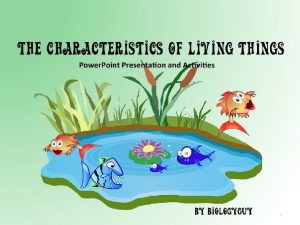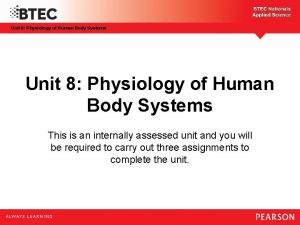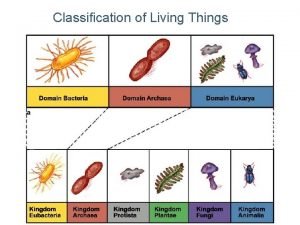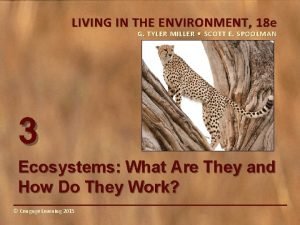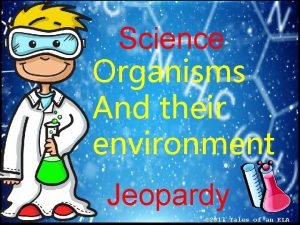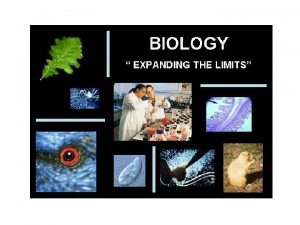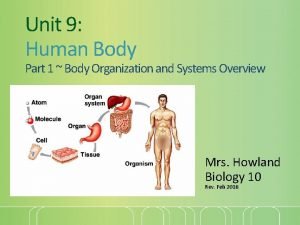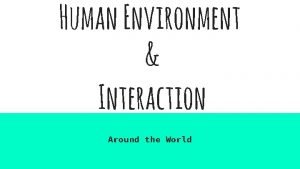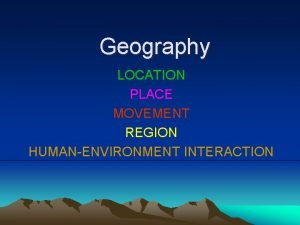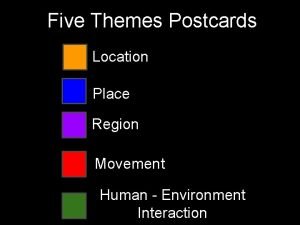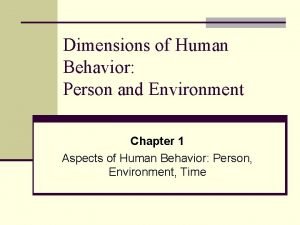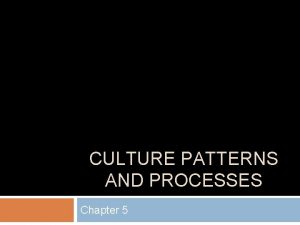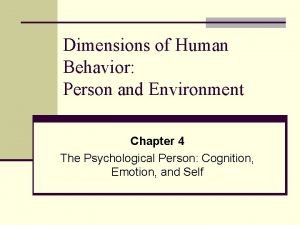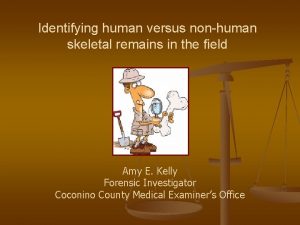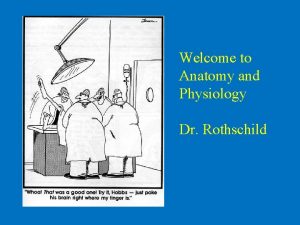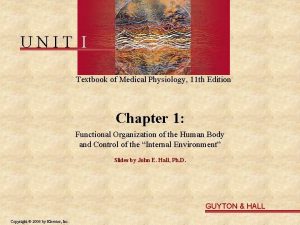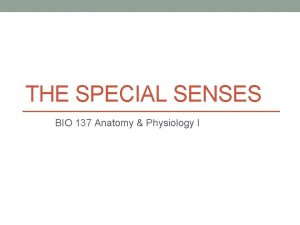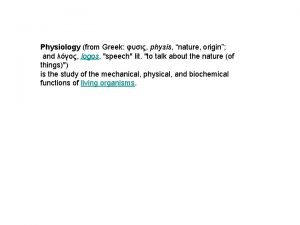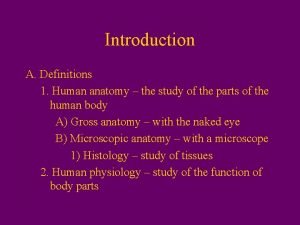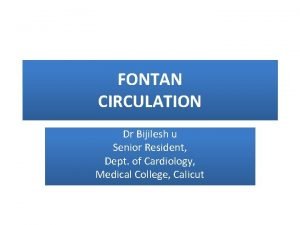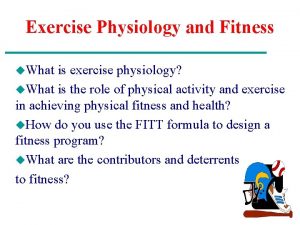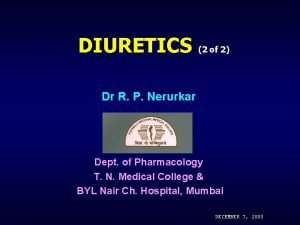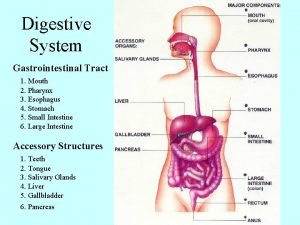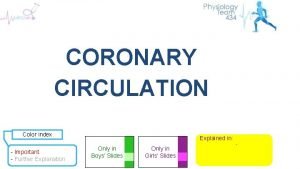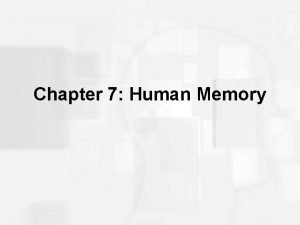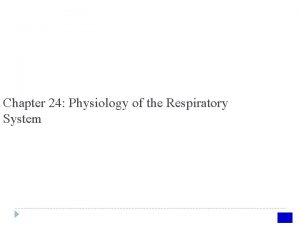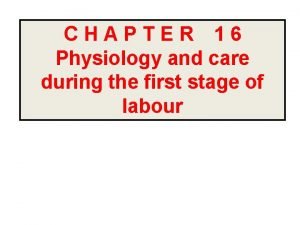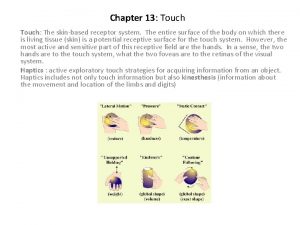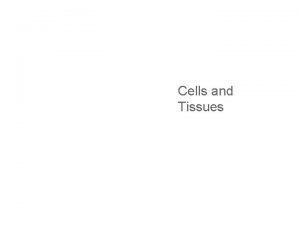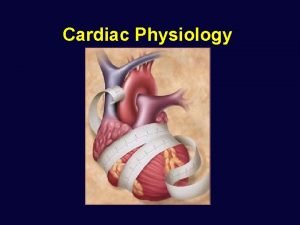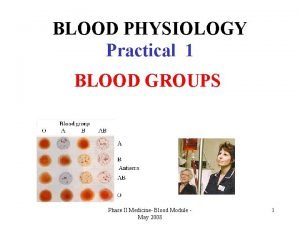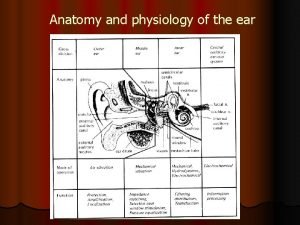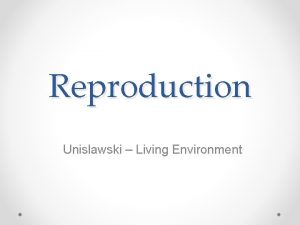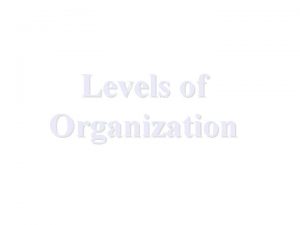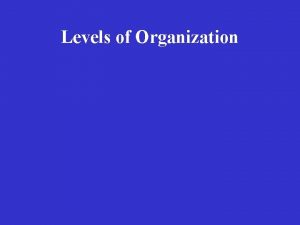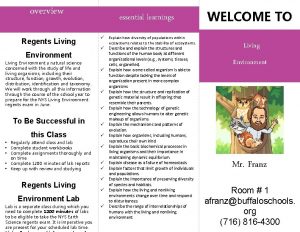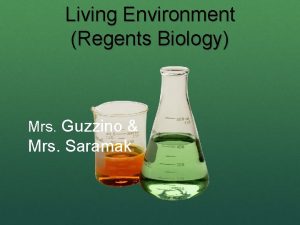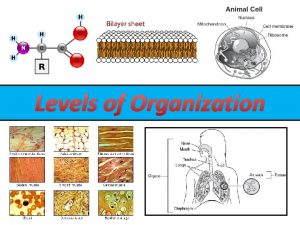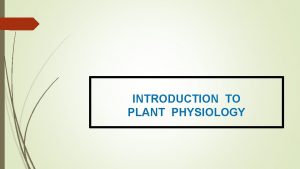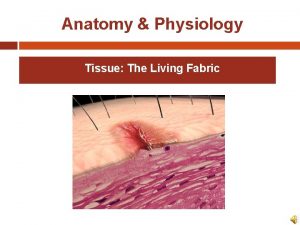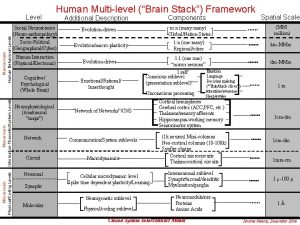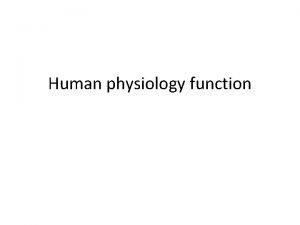Human Physiology Living Environment Mrs Unislawski Levels of













































































































- Slides: 109

Human Physiology Living Environment – Mrs. Unislawski

Levels of Organization � There are so many different types of cells, that biologists have identified levels of organization that make it easier to classify and describe the cells within an organism.

Levels of Organization �The four levels of organization are: � cell – smallest living unit tissue – group of similar cells that work together to perform a specific function organ – group of tissues working together when the task is too complicated to be carried out by just one type organ system – group of organs working together to perform a specific function

Levels of Organization

Levels of Organization �Together, the various body systems make up our body system, which is capable of performing life functions through the precise organization of its cells.


The Human Body & Homeostasis �Homeostasis is the maintenance of a constant and stable internal environment in a living organism. �Disease occurs when something interrupts a life function, which disrupts homeostasis.

� You Are Done With Notes For Today

The Human Body & Homeostasis So how does the body maintain homeostasis while performing all these life functions? �through the means of feedback systems internal communication systems or self-talk mechanisms that trigger responses within the body �feedback systems are structured to involve the body’s organ systems, which work together to maintain optimum internal conditions

Feedback Systems �In negative feedback systems, the output “turns down” or “shuts off” the original stimulus �Example: Regulation of blood glucose levels

Feedback Systems

The Body’s Organ Systems �Endocrine system – regulation (balancing) of the body’s systems �Reproductive system – continuation of the species by creating offspring �Respiratory – gas exchange �Circulatory – transport within the body

The Body’s Organ Systems �Excretory – gets rid of wastes �Skeletal – support and protection �Muscular – movement �Digestive – breaks down food �Immune – self defense

� You Are Done With Notes For Today

Endocrine System �Function: regulation (balancing) of the body’s systems �Composed of all hormone-producing glands (such as the pituitary, thyroid, pancreas, testes, and ovaries) �Releases hormones to control all functions in the human body that need constant adjustment.

Endocrine System �Hormones are chemical messengers within the body that use feedback mechanisms to trigger responses by sending signals. Any organ that releases a hormone is called a gland. Our bodies contain many hormones, including insulin, adrenalin, dopamine, growth hormone, and histamine.

Endocrine System

Endocrine System �Like enzymes, hormones function only when they meet target cells with the correctly shaped receptor molecules.

Endocrine System �The hormone that lowers your blood sugar levels is called insulin. This chemical is produced by a gland called the pancreas. �Failure to regulate blood sugar is the disease called diabetes.

� You Are Done With Notes For Today

Reproduction in Humans �Function: continue the species by making offspring �The reproductive system in humans is regulated by hormones.

Reproduction in Humans The main male hormone is testosterone. This chemical is produced by the testes, and its main jobs are to create secondary sex characteristics such as a deep voice and hair growth, and assist in production of gametes.

Reproduction in Humans The main female hormone is estrogen. This chemical is produced by the ovaries, and its main jobs include the creation of secondary sex characteristics such as breasts, production of gametes, and regulation of the menstrual cycle or pregnancy.

Reproduction in Humans The menstrual cycle is a repeating set of events that lasts approximately 28 days, and involves preparing a woman’s body for pregnancy, whether she actually becomes pregnant or not.

Reproduction in Humans What happens during the menstrual cycle? �In the first half of the cycle, levels of estrogen (the “female hormone”) start to rise and make the lining of the uterus (womb) grow and thicken. At the same time, an egg (ovum) in one of the ovaries starts to mature. At about day 14 of a typical 28 -day cycle, the egg leaves the ovary. This is called ovulation.

Reproduction in Humans After the egg has left the ovary it travels through the fallopian tube to the uterus. Hormones levels rise and help prepare the uterine lining for pregnancy. A woman is most likely to get pregnant during the three days before ovulation or on the day of ovulation. Keep in mind, women with cycles that are shorter or longer than average may ovulate earlier or later than day 14. Also keep in mind that though the egg can survive for only 24 hours, a sperm can survive for up to 5 days. These survivals lengthen the fertile period of the cycle.

Reproduction in Humans If the egg is fertilized by a man’s sperm cell and attaches to uterine wall, the woman becomes pregnant. If the egg is not fertilized, it will break apart. If pregnancy does not occur, hormone levels drop, and the thickened lining of the uterus is shed during menstruation, or period.

Reproduction in Humans **Therefore, fertilization occurs in the fallopian tubes. **

� You Are Done With Notes For Today

Reproduction in Humans Human Male Reproductive System The male reproductive system performs two main functions: �produce and mature sperm cells �deposit mature sperm cells inside the female reproductive system.

Male Reproductive System

Male Reproductive System �The testes produce the sperm and are held inside a sac called the scrotum. The scrotum hangs outside the body to keep the testes as a lower temperature – sperm form better at this lower temperature. When mature, the sperm leave the testes, pass through the vas deferens, and out the urethra through the penis.

Male Reproductive System The urethra is a long tube that transports sperm and urine for the male. The glands around the reproductive tract produce a fluid to keep the sperm at the proper p. H. This mixture of sperm and fluid is called semen.

Female Reproductive System The human female reproductive system has two main jobs: � produce ova � provide a place for the new embryo to grow and develop

Female Reproductive System �Each month, a hormone is released by the brain and stimulates one of the two ovaries to release a mature egg. �The release of the ova is called ovulation and usually happens around the 14 th day of the woman’s cycle. �The ova is released into one of the fallopian tubes and slowly starts to move towards the uterus.

Female Reproductive System If the egg is fertilized, it must take place at the top of the fallopian tubes or the embryo will not grow large enough to implant (stick) to the uterine wall 5 -7 days later when it reaches the uterus.

Female Reproductive System �If a zygote reaches the uterus, it will implant in the uterine wall, which has been thickened with lots of new tissue and blood vessels. (If no baby implants in this thickened tissue, this extra tissue is shed, resulting in menstruation or a period. )

Female Reproductive System �In the uterus the zygote will develop into a embryo and then a fetus, and then be born.

Female Reproductive System �The umbilical cord is the attachment between the baby and mother. It is attached to a large mass of blood vessels on the side of the uterus called the placenta. �The placenta is a place where the baby’s blood vessels are lined up next to the mother’s so oxygen, carbon dioxide, nutrients, and other wastes can diffuse across.

Female Reproductive System �Wastes diffuse from baby to mother so she can get rid of them. Nutrients and oxygen go from mother to baby so it can survive.

� You Are Done With Notes For Today

Embryonic Development �Development is progression of the body through changes from a simple to more complex form. Unborn babies must develop from a single-celled zygote to a fully functional body within only 40 weeks!

Embryonic Development Two Types of Development: � 1. External Development – the new zygote develops outside the female’s body. Examples: birds, reptiles, turtles, chickens � 2. Internal Development – the new zygote develops inside the mother’s body until it is ready to be born. Examples: humans, mammals

Embryonic Development �During fertilization, a single sperm penetrates the mother's egg cell, and the resulting cell is the zygote. �The zygote contains all of the genetic information (DNA) necessary to become a child. Half of the genetic information comes from the mother’s egg, and half from the father’s sperm.

Embryonic Development �The zygote spends the next few days traveling down the Fallopian tube and divides by mitosis to form a ball of cells.


Embryonic Development �Next the cells of the embryo multiply and begin to take on specific functions. This process is called differentiation, which produces the varied cell types that make up a human being (such as blood cells, kidney cells, and nerve cells).


Embryonic Development There is rapid growth, and the baby's main external features begin to take form. It is during this critical period of differentiation (most of the first trimester) that the growing baby is most susceptible to damage (birth defects) from: � Alcohol, certain prescription and recreational drugs, and nicotine � Infection (such as rubella or cytomegalovirus) � Radiation from x-rays or radiation therapy � Nutritional deficiencies

Embryonic Development The blastocyst is known as an embryo once it implants in the uterine wall. The embryo is known as a fetus once it reaches the end of the eighth week of pregnancy.

Embryonic Development �Remember that although a fetus’s DNA is determined by the sequence of chromosomes contained in the gametes of the parents, the unborn baby’s environment may alter expression of this DNA by turning some genes on or off. Therefore, when the baby is born he/she is a product of both heredity and environment (nature and nurture).

� You Are Done With Notes For Today

Skeletal System Function: support and protection Composed of bone, cartilage, and ligaments �Protects and supports body organs �Site of blood cell formation

Skeletal System �Humans are vertebrates so we have a backbone and internal skeleton to protect soft organs and nerves.

Muscular System Function: movement Composed of muscles and tendons � Allows manipulation of the environment, locomotion, and facial expression � Maintains posture � Produces heat

� You Are Done With Notes For Today

Digestive System Function: break down foods so they’re small enough to diffuse into our blood then cells Composed of the oral cavity, esophagus, stomach, small intestine, large intestine, rectum, anus, and liver

Digestive System �Remember: complex molecules = large simple molecules = small

Digestive System The digestive system must break down complex foods into simple building blocks that can be used for synthesis of needed compounds in the body.


Digestive System

� You Are Done With Notes For Today

Excretory System Function: gets rid of wastes Composed of kidneys, ureters, urinary bladder, and urethra �Eliminates wastes from the body �Regulates water, electrolyte, and p. H balance of the blood

Excretory System Wastes in Your Body � As the liver filters your blood it creates a waste called urea. Your body excretes this waste through sweat and as part of the urine.

Excretory System Wastes in Your Body � The kidneys remove any extra water and send it to the bladder to be excreted as urine. Some water is also lost as sweat and through your breath.

Excretory System Wastes in Your Body � Carbon dioxide, which is produced through the process of cellular respiration, is excreted by the lungs.

Excretory System Wastes in Your Body � Excess minerals, nutrients and undigested food are excreted by your bowels.

� You Are Done With Notes For Today

Respiratory System Function: gas exchange Composed of the nasal cavity, pharynx, trachea, bronchi, and lungs Keeps blood supplied with oxygen and removes carbon dioxide

� You Are Done With Notes For Today

Nervous System Function: communication Composed of the brain, spinal column, and nerves � Responds to stimuli by activating muscles and glands

Nervous System � The various parts of the nervous system receive information and interpret sensory information from the environment (stimulus) and then send messages around the body to regulate body functions.

Nervous System � Neurons (nerve cells) communicate between cells within the body by transmitting electrical impulses.

Nervous System � Example: You touch a hot stove. Receptors in your skin receive the environmental stimulus. Your sensory neurons communicate this stimulus to your brain by sending electrical impulses. Your brain receives the impulses, interprets the message, then sends electrical impulses back to neurons in your muscular system, telling it to pull your hand away from the stove.

� You Are Done With Notes For Today

Circulatory System Function: transport within the body Composed of the heart and blood vessels The heart pumps blood The blood vessels transport blood throughout the body

Circulatory System The circulatory system moves food and oxygen to every cell in the body and take waste from every cell and get rid of it (through the lungs or kidneys).

Circulatory System The Heart �The heart is the pump that keeps your blood moving through your veins. �Blood that is low in oxygen enters the right atrium of the heart. From here the blood travels to the lungs. The lungs replenish the blood's oxygen supply. The lungs send the blood back to the heart, which pumps the body with oxygen to the body cells.

Circulatory System

Circulatory System Practice:

� You Are Done With Notes For Today

Circulatory System Blood pressure measures the amount of force (pressure) on the walls of blood vessels at two times: when the heart is contracted and pumping and when it is resting. High blood pressure means the heart is working harder to pump the same amount of blood throughout the body.

Circulatory System Low blood pressure means the heart could stall because it doesn’t have enough blood to pump throughout the system. Blood pressure is a quick, easy, and nonpainful way for a physician to see how healthy your heart and blood vessels are.

Circulatory System The Blood

Circulatory System Blood is made of four major parts: �Red blood cells – (RBC) use the protein hemoglobin to carry O 2 from the lungs to the rest of the body

Circulatory System �White blood cells – (WBC) help fight disease by attacking foreign objects in the body.

Circulatory System �Plasma – mostly water and salts, makes up the liquid part of the blood. Plasma is like a stream, carrying all of the little cells as it flows along.

Circulatory System �Platelets – help to clot blood when a blood vessel is broken by sticking to the blood vessel walls to plug the hole.

Circulatory System �Platelets – help to clot blood when a blood vessel is broken by sticking to the blood vessel walls to plug the hole.

� You Are Done With Notes For Today

Immune System Function: self-defense Composed of red bone marrow, thymus, spleen, lymph nodes, and lymphatic vessels

Immune System � The immune system helps the body recognize and destroy pathogens (organisms or viruses that cause disease) before they spread. Once a pathogen is inside the body, it will reproduce rapidly until it is destroyed. Pathogens can destroy tissues, cause organs to stop functioning, or release toxins into our bodies that will interrupt homeostasis and possibly cause death.

Immune System Stages of Immune Response 1. The body’s first line of defense against pathogens is the skin, which acts as a barrier by keeping foreign substances out. Mucous, sweat, and tears help by catching, collecting, and flushing out pathogens.

Immune System Stages of Immune Response 2. If the pathogens do manage to enter the body, they trigger an immune response. The substance that triggers this type of response is called an antigen. Antigens are foreign receptor molecules on the outside of pathogens, much like a street sign written in another language. The body recognizes that it’s foreign, and begins attacking.

Immune System Stages of Immune Response �T cells (the cells targeted by HIV) trigger an alarm system within the body. This tells the body to produce antibodies, which are Y-shaped proteins that recognize and bind like a lock and key to antigens in order to neutralize them.

Immune System �Next, the body produces millions of white blood cells, most of which are phagocytes, to engulf and destroy the neutralized antibody-antigens. An increased white blood cell count is one thing doctors look for to determine if the body is fighting off diseases.

Immune System

Immune System �Human body cells have receptor proteins on their outer surfaces that identify them as good cells so the immune system does not attack them. Any cell that does not have the body’s own mark on it is recognized as foreign and is attacked.

Immune System � When a person receives an organ transplant, doctors try to find donors whose cell markers are nearly identical to the recipient. If the immune system attacks a transplanted organ, this is called organ rejection. Transplant patients usually take high dosages of immune suppressant drugs (drugs that shut down the immune system) to ensure this does not happen.

Immune System �Cloned cells work especially well, since they contain a person’s unique cell markers, so the body recognizes the new organs, need for immune suppressant drugs.

� You Are Done With Notes For Today

Immune System 3. If the pathogens begin reproducing faster than the body can attack and kill them, the third set of immune responses begins. The immune system releases chemicals that increase the core body temperature, called a fever. This slows down pathogens, since they can only operate within a narrow temperature range. The heart rate increases so the blood flows faster and white blood cells get to the site of infection faster. Unfortunately, this also slows down the other body systems, since enzymes can only function within optimum temperature ranges. That is why the body cannot withstand having an excessively high or prolonged fever, or it will cause death.

Immune System Allergies � Sometimes the body develops an antigen response to something which is not actually harmful. This is called an allergy. Other times a person’s body mistakenly attacks itself, which is called an autoimmune disorder. Examples of this include lupus, arthritis, multiple sclerosis, and Celiac disease.

Immune System Vaccines One of the greatest medical advances in human history was the invention of the vaccine. Vaccines are weakened or dead pathogens that are injected into the body.

Immune System Vaccines cause an immune response that produces antibodies, but the deactivated pathogens are incapable of making you sick. That way when you are exposed to the real pathogen for the first time, your body already knows how to fight it. However, this method only works on pathogens if they have not mutated. That is why you have to get a new flu shot every winter.

Immune System How. Vaccines Work 1. You don’t want to get the chicken pox virus. 2. You receive a vaccine for chicken pox. The shot contains weak or dead chicken pox virus. 3. Your body now learns the shape of this enemy pathogen, and memorizes it for later. 4. Your sister gets the chicken pox virus. 5. Your body already knows how to make defenses for this antigen, so it produces antibodies faster than the virus can reproduce. 6. You fight off the chicken pox virus infection before you even realize you had it.

Immune System Antibiotics An antibiotic is a medicine taken to kill bacteria. When a pathogen enters your body and triggers an immune response, your body immediately begins fighting it off. However, if the bacteria reproduces or mutates faster than your body can react, a doctor may prescribe an antibiotic to help your immune system.

Immune System What is antibiotic resistance? Widespread use of antibiotics for non-medicinal purposes, such as in cattle feed and in antibacterial hand soaps, is causing concern in the medical and pharmaceutical industries, since it is responsible for the evolution of antibiotic resistant bacteria. This occurs when a few bacteria survive the antibiotic treatment, allowing them to live, reproduce, and spread their immunity. A growing number of bacteria are now resistant to antibiotics, causing diseases such as MRSA, and leaving these drugs ineffective when they are really needed to treat serious infection.

Immune System How do we prevent antibiotic resistance? The solution to this problem is to only use antibiotics when absolutely necessary, and using the entire course of antibiotic prescriptions.
 They are mrs garcia and mrs castro
They are mrs garcia and mrs castro They are mrs garcia and mrs castro
They are mrs garcia and mrs castro Mrs. darling was ___________ of mrs. s.
Mrs. darling was ___________ of mrs. s. Mrsgren
Mrsgren 3 layers of muscle
3 layers of muscle Chapter 1 introduction to human anatomy and physiology
Chapter 1 introduction to human anatomy and physiology Unit 8 physiology of human body systems
Unit 8 physiology of human body systems Animal physiology exam 1
Animal physiology exam 1 Holes essential of human anatomy and physiology
Holes essential of human anatomy and physiology Anterior posterior distal proximal
Anterior posterior distal proximal Chapter 2 human reproductive anatomy and physiology
Chapter 2 human reproductive anatomy and physiology Paratubular cyst
Paratubular cyst Anatomy and physiology ninth edition
Anatomy and physiology ninth edition Whats an energy pyramid
Whats an energy pyramid Is moss living or nonliving
Is moss living or nonliving Living non living dead
Living non living dead What is the smallest living unit in the body
What is the smallest living unit in the body 8 levels of classification in order
8 levels of classification in order Costa level question
Costa level question Living in the environment 18th edition
Living in the environment 18th edition Living in the environment 18th edition
Living in the environment 18th edition Living in the environment 13th edition
Living in the environment 13th edition Living environment jeopardy
Living environment jeopardy Living environment review packet
Living environment review packet Is biology living environment
Is biology living environment Financial environment in business environment
Financial environment in business environment Mrs rajlaxmi is working
Mrs rajlaxmi is working Human body structure
Human body structure 5 levels of communication
5 levels of communication Regional terms anatomy
Regional terms anatomy When the by-products of human actions taint the environment
When the by-products of human actions taint the environment What is hei in geography
What is hei in geography Human environment
Human environment Human environment
Human environment 5 themes of geography postcards
5 themes of geography postcards Human environment interaction in portland oregon
Human environment interaction in portland oregon Relative location of nile river
Relative location of nile river Biological dimension of human behavior
Biological dimension of human behavior Human environment interaction
Human environment interaction Human environment interaction
Human environment interaction Relocation diffusion def
Relocation diffusion def Dimensions of human behavior: person and environment
Dimensions of human behavior: person and environment Rome human environment interaction
Rome human environment interaction Human vs non human bones
Human vs non human bones Cna chapter 8 human needs and human development
Cna chapter 8 human needs and human development Chapter 8 human needs and human development
Chapter 8 human needs and human development Gni definition ap human geography
Gni definition ap human geography Human and non human nouns
Human and non human nouns Ventral cavity
Ventral cavity Feed-forward control physiology
Feed-forward control physiology Bio 137
Bio 137 Physiology of respiration
Physiology of respiration Tattoo anatomy and physiology
Tattoo anatomy and physiology Special senses physiology
Special senses physiology International anatomy olympiad
International anatomy olympiad Conducting tissue
Conducting tissue Specialized stems examples
Specialized stems examples Aphasia meaning
Aphasia meaning Memory physiology
Memory physiology Coagulopahty
Coagulopahty Bone metabolism
Bone metabolism Physiology definition
Physiology definition Physis e logos
Physis e logos Peptic ulcer anatomy and physiology
Peptic ulcer anatomy and physiology Pediatric exercise physiology
Pediatric exercise physiology Microbial physiology and metabolism lecture notes
Microbial physiology and metabolism lecture notes Cantlie line
Cantlie line Epigastric region
Epigastric region Hypogastric region
Hypogastric region Physiology definition
Physiology definition Physiology of coitus
Physiology of coitus Straw colored fluid
Straw colored fluid History of physiological psychology
History of physiological psychology Contraction
Contraction The central sulcus divides which two lobes? (figure 14-13)
The central sulcus divides which two lobes? (figure 14-13) Fontan physiology
Fontan physiology Physiology of cervix
Physiology of cervix Define exercise physiology
Define exercise physiology Exercise physiology for health, fitness, and performance
Exercise physiology for health, fitness, and performance Isotonic exercise physiology
Isotonic exercise physiology 2 types of exercise
2 types of exercise Myeloma uk forum
Myeloma uk forum Dive physiology
Dive physiology Spironolactone uses
Spironolactone uses Brush border enzymes
Brush border enzymes Http://anatomy and physiology
Http://anatomy and physiology Color index formula physiology
Color index formula physiology Memory physiology
Memory physiology Memory physiology
Memory physiology What is the physiology of respiration
What is the physiology of respiration Physiology of labour
Physiology of labour Lactation physiology
Lactation physiology Touch physiology
Touch physiology Exercise intro chapter 1
Exercise intro chapter 1 Transport cell
Transport cell Heart physiology
Heart physiology Clinical significance of blood grouping
Clinical significance of blood grouping Law of mass action physiology
Law of mass action physiology Appendectomy anatomy and physiology
Appendectomy anatomy and physiology Aohs foundations of anatomy and physiology 1
Aohs foundations of anatomy and physiology 1 Aohs foundations of anatomy and physiology 1
Aohs foundations of anatomy and physiology 1 Anatomical planes
Anatomical planes Anatomy and physiology chapter 8 special senses
Anatomy and physiology chapter 8 special senses Physiology of external ear
Physiology of external ear Chapter 13 anatomy and physiology of pregnancy
Chapter 13 anatomy and physiology of pregnancy Lateral sulci mouth
Lateral sulci mouth Pep 3510
Pep 3510 Physiology of body temperature
Physiology of body temperature Urinary system introduction
Urinary system introduction Unit 26 animal anatomy physiology and nutrition
Unit 26 animal anatomy physiology and nutrition



